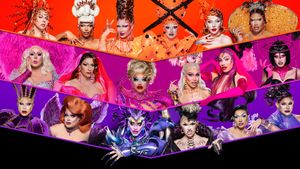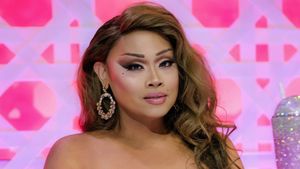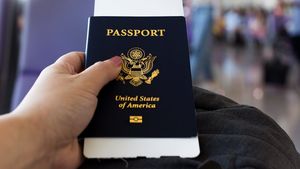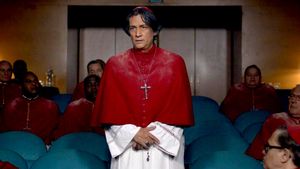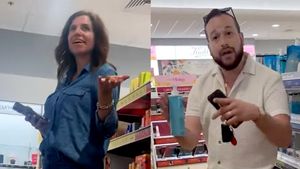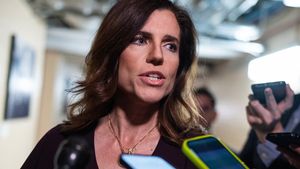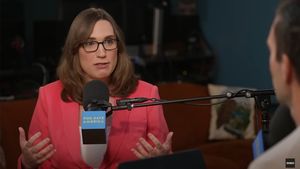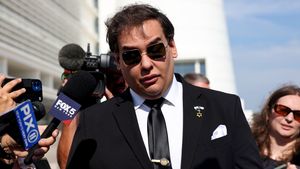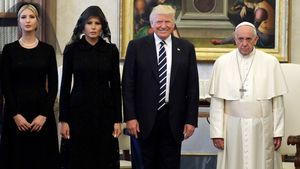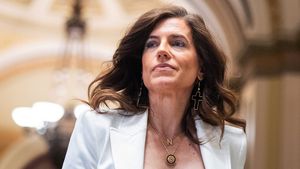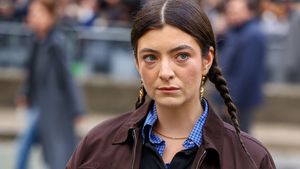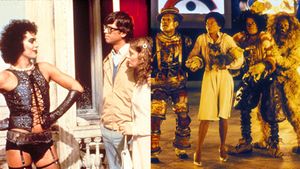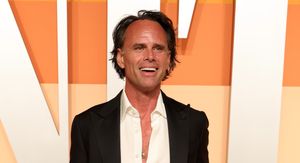She’s written songs with bold and powerful messages; she’s credited for inadvertently conceptualizing the title of Nirvana’s arguably most famous song; so as I prepared for my interview with Kathleen Hanna last Friday morning, I couldn’t even imagine how it would begin.
“Oh! Sorry, the cat just vomited,” the punk rock icon exclaimed.
Ok, that was unexpected. But I soon came to learn that humor and candidness are two things that come easy to Hanna, the subject of the documentary, The Punk Singer, which opens in select cities this Friday. Best known as the front woman of the bands Bikini Kill and Le Tigre, she is a feminist activist, who, according to many, including the The L Word’s loveable Alice Pieszeki, “just pretty much started the whole Riot Grrrl music scene, but hey.”
The film documents her story, from her rise to fame, to meeting her husband (Beastie Boys’ Adam Horovitz), to her battle with late-stage Lyme Disease and her subsequent return to performing with her latest band, The Julie Ruin.
While the story is Hanna's, the fact that it was filmed at one of the most difficult points of her battle with Lyme Disease shows a vulnerable side of the ordinarily badass punk rocker. “The timing was all right, and the timing was all wrong at the same time because I was sick,” she says of the making of the film. “My health was a 24-7 job. Just being able to do simple things like make breakfast or brush my teeth at times was difficult.”
Perfect timing has never been Hanna's forte, who in the film, The Punk Singer, recalls what brought her into music in the first place. Performing spoken word in Olympia, Washington in the early nineties, she had a conversation with feminist writer Kathy Acker, who told her that being in a band was the only way to make her voice heard, since people weren’t going to spoken word shows as much. “So I went home, and I started a band,” Hanna nonchalantly recalls.
Starting a band is an understatement. Hanna became an icon on the stage. She possessed an unprecedented combination of a paralyzing voice, transformative lyrics, and a stage presence that was pretty in punk. But from the beginning, Hanna wanted to inspire change: “We weren’t satisfied even with what was coming out of Seattle at the time,” she says “There were albums coming out with incredibly sexist imagery on the covers, and we were like, ‘this is supposed to be alternative. Alternative to WHAT?’ All we were seeing was mainstream values being reflected in what was called alternative to us, and what was called punk and what was called hardcore. So it made sense for us to start a challenge there in our own backyard.”
This mentality of challenging the norm seemed to be innate in Hanna, an artist at heart. She had studied photography at The Evergreen State College in Olympia, and created an art gallery called Reko Muse when her school administration censored her work, which dealt unapologetically with issues of sexism. Therefore, it was the anti-establishment mentality of punk rock that Hanna was most drawn to. “The idea of punk is just taking the stage, and if you don’t even know what you’re doing, that’s totally okay. And so we just took the stage, not knowing what we were doing! But the thing is if you’re women and you do that, people go, ‘you don’t know how to play your instruments!’ and we’re like, ‘we’re punk rockers, of course we don’t know how to play our instruments!’” she laughs. “It’s kind of like when you’re a feminist, and you get called a lesbian, and you’re like, ‘so what?’ That’s clearly a stereotype of feminism, but at the same time, it’s not an insult.”
As Bikini Kill gained notoriety within the Olympia music scene, Hanna perpetuated the ideals of feminism, as presented through the lens of punk rock. In the film, she talks about creating an outlet for women who wanted to feel empowered through her music, while simultaneously avoiding the violent moshing culture that had taken over the punk rock concert experience. At shows, Hanna encouraged her female fans to move to the front of the crowds, keeping the boys at bay while the women could rock.
Above all, Hanna wanted women to feel included and safe, and she continues to be very vocal about her support for women’s rights, as well as gay rights. She says that the unifying factor in much of her activism stems from her belief in a fundamental right to health care. “My husband and I didn’t want to get married until marriage was legal for everybody,” she recalls. “Then, when I stopped being in Le Tigre, my health insurance was about to lapse. And thank God I didn’t let it lapse because I [had Lyme Disease]... I was able to just be put onto his… I was like, whatever, let’s just sign the piece of paper and get me health insurance.”
Still, recalling her initial promise to wait for full marriage equality, she laments, “I went back on my word to myself! And now I’ve told you about it, which is stupid because nobody would have known (laughs)!” I reassured her that I had just recently attended a wedding between a wonderfully loving couple, whose matrimony was catalyzed by a similar predicament. “You see!” she exclaimed. “In our mother’s generation, you got married because you got pregnant. Now you get married because you need a root canal!” She added simply, “For me, I just see marriage as a way to get equal rights.”
Back in the day!
A vocal ally of the gay community, I asked Hanna if she was ever surprised about her LGBT fan base. She humbly pointed out that she is often surprised by any kind of success, then added, “When you’re making music that acknowledges oppression and - more so in Le Tigre - heterosexism and homophobia and racism, you’re going to attract people who have similar values and who have been ostracized, left out, and made to feel like shit.” She credits the impact players within homocore, from G.B Jones to Donna Dresch, as being instrumental in the institution of the Riot Grrrl movement. “I think somehow that influence hopefully has shown through because I’m very proud of it.”
After a long struggle with an unknown illness, followed by a difficult diagnosis and treatment, Hanna started her current band, The Julie Ruin (a name inspired by her late nineties solo album) as a way to connect with her former, healthy self. “I didn’t feel sick when I was singing. I felt like myself.” Beginning their Australian tour in January, Hanna remains cognizant of her health, implementing some noticeable lifestyle differences from her Bikini Kill and Le Tigre days. “I can’t drink. I need to try to keep my stress low. I need to get a lot of sleep,” she says.
While some associate punk rock with rebellion and anti-conformity, Hanna lives by the mantra of inclusion and finding community and togetherness, especially for those who face accusations of otherness. “Look for people online who you can hook up with and hang out with,” she advises. She values any outlet, whether it's on the internet or out at a rock show, where people can embrace those differences and find others with similar interests. That way, as she puts it, one can realize, “Oh this is stuff I’m interested in, and it doesn’t make me feel like total shit!”
The Punk Singer opens in New York and LA on Friday, with additional screenings coming soon to select cities. Rarely does a film so coherently mix archival footage with topical situations and modern day interviews, in a way that is both expository and real. Hanna’s story is a fascinating one, and one that can hardly be given justice in a mere 80 minutes. Still, The Punk Singer is able to give voice to an already outspoken woman and to a nation of misfits who have followed her music for over two decades.





















































